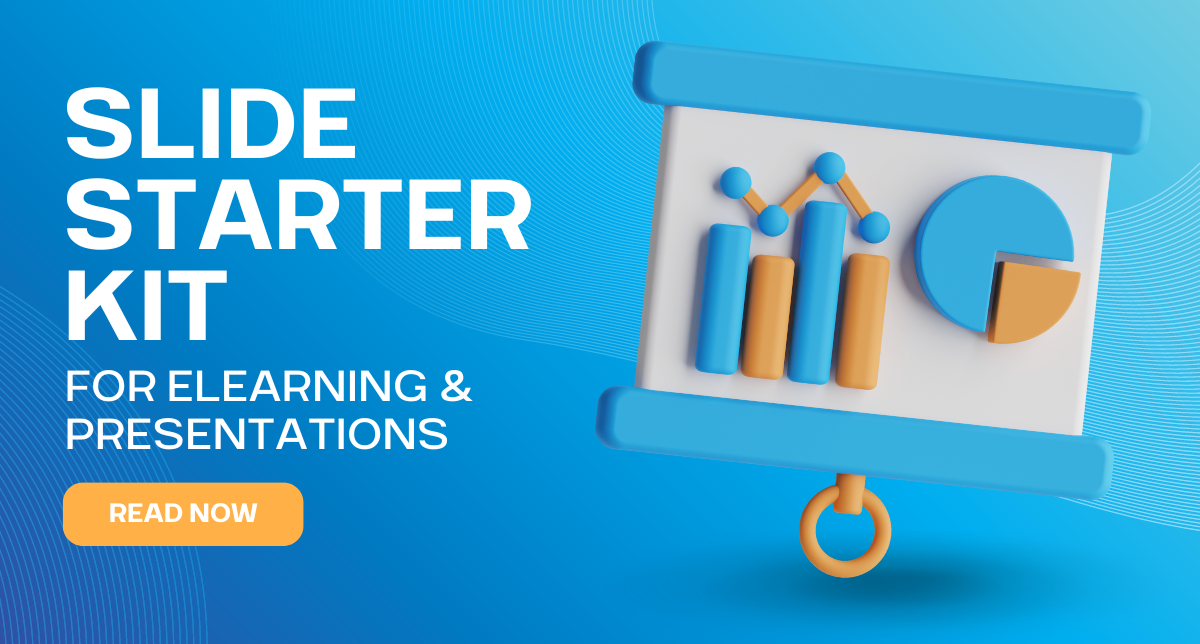
A Starter Kit for Your Next Presentation or E-learning Course
I get a lot of questions how to make better presentations and e-learning courses better and more effective. A recent conversation reminded me of the four steps that you've got to master for making your project a success.
- Understanding your audience
- Organizing your message
- Getting the right 'look & feel'
- Putting it all together
I've assembled a super useful 'starter kit' of resources that I've found helpful over the years. These resources will help you (or anyone) knock your next presentation or e-learning project out of the park.
STEP 1: Understanding Your Audience
Getting to know your audience significantly increases the odds you’re work will have a meaningful impact. This important step can help you glean the insights and context required to truly connect with your audience.
To help with this, here are Nancy Duarte’s (@nancyduarte) “Seven Questions to Knowing Your Audience” from her book, Resonate.
Grab a copy of Nancy Duarte’s Audience Needs Map here.
STEP 2: Organizing Your Message
Overloading your audience with too much information leads to LESS understanding – not more! Nobody enjoys the dreaded data dump and telling them everything means they won’t remember anything.
As you consider what to include, be sure to do it in a way that gives you the confidence your audience will easily be able to answer these two questions:
- What three points do you want them to remember?
- What do you want them to do?
One of my favorite ways wrangle the messy pile of random thoughts into a cohesive structure built around this context is the Beyond Bullet Points story template. Unlike native PowerPoint templates, Cliff Atkinson’s (@cliffatkinson) super helpful approach is based on brain science to help get your message through and move your audience to action.
Grab a copy of Cliff Atkinson's Beyond Bullet Points story template here.
STEP 3: Finding the Right 'Look & Feel'
For many, finding the right look and feel for their content can a challenge. Wisely selecting from a seemingly endless set of possibilities for fonts, colors, icons, and images is not easy.
But first impressions are critical for capturing attention and establishing credibility. While we might not always admit it, we do judge things based on what they look like. Our lizard brains can make snap judgments in as little as 17 milliseconds. Literally faster than the blink of an eye! In some studies, as much as 94% of the factors involved in judging credibility were design-related.
Fortunately, David Anderson (@elearning) has got you covered with a visual design mapping process that makes it easy for anyone to quickly identify the right visual elements that make up the “visual voice” of your project.
Grab a copy of David’s visual design mapping template or take a deeper dive here.
STEP 4: Putting It All Together
Once you’re armed with a relevant, focused message tailored to your audience and a vision for the appropriate look and feel, you’re ready to start building. That means you’re going to need design assets like photos, fonts, icons, etc.
The majority of us working on these types of projects are faced with the additional constraint of having a limited budget….or often no budget at all. To help you over this final hurdle, I’ve collected my favorite sources of free design assets into a free e-book.
Grab a copy of the free Design Toolkit ebook here.
Grab your own starter kit and start impressing your audiences today!
[ originally posted on mike-taylor.org ]
You might also be interested in :




Learning Designer @ Lifeline Australia | Designing Learning Solutions
3yHi Mike - Just want to say thank you for your eBook. I have just shared this with my team at work. 😊